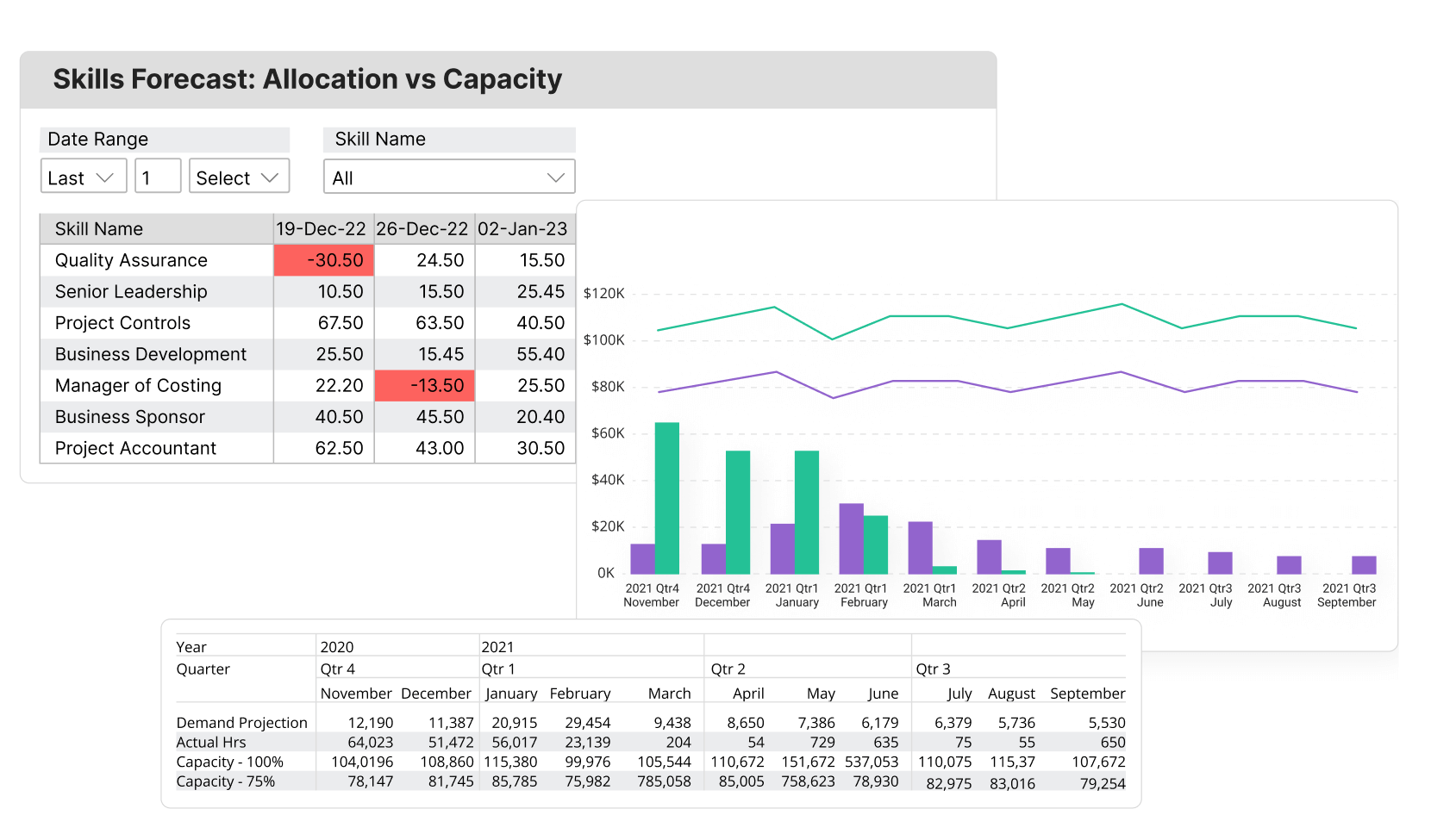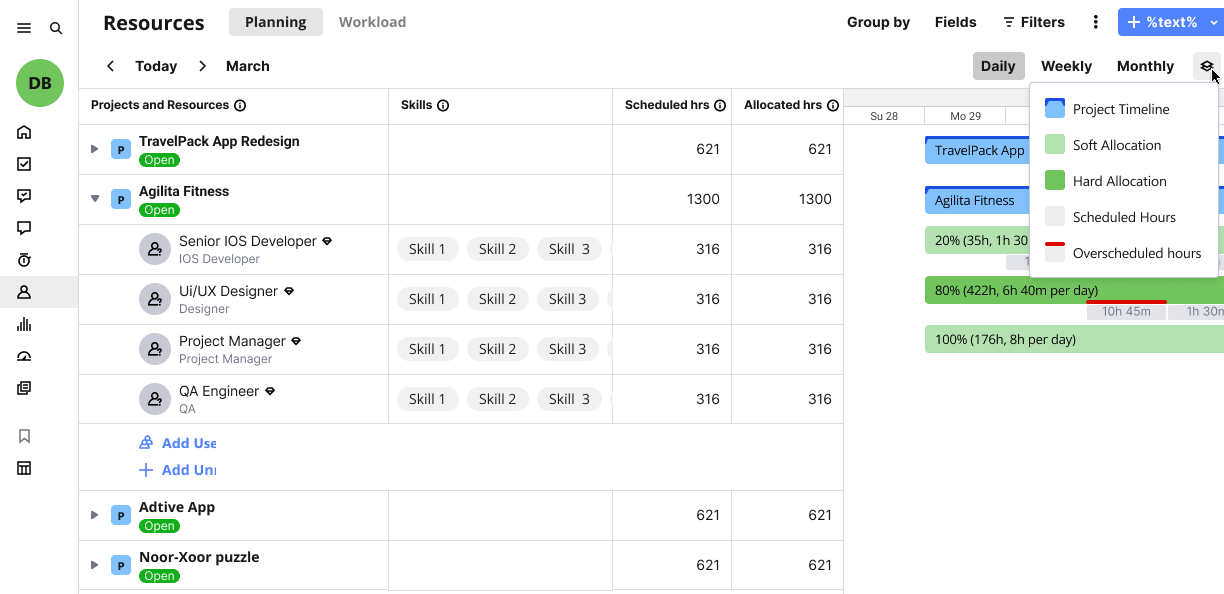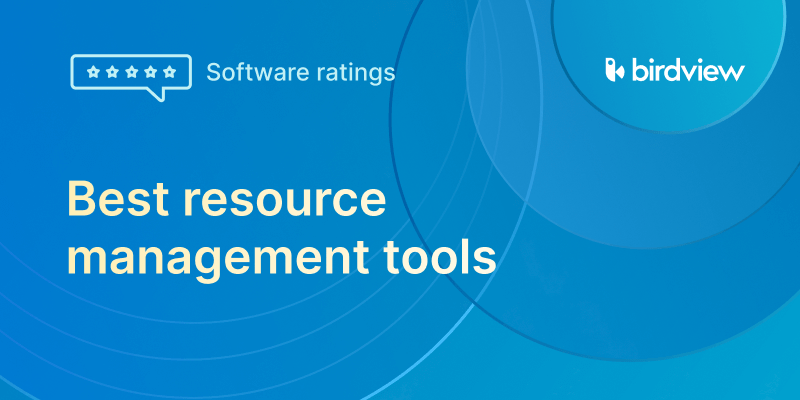Best practices and strategies for resource capacity planning in project management. Forecast better demand and balance workloads.
“Failure to plan is planning to fail.” The wise words from Winston Churchill continue to reverberate in the 21st century and every aspect of our lives.
Project management is not just about starting and completing a task successfully. It‘s also about planning how to execute the task, days, weeks, months, or even years in advance.
This is where resource capacity comes in. In this process, the planner must ensure the team and tools are utilized optimally to meet project goals. Without this planning, projects can face delays, cost overruns, and resource bottlenecks, leading to dissatisfied stakeholders and stressed teams.
From defining what constitutes a resource in this context to tackling common challenges and leveraging advanced tools, we‘ll cover everything you need to know to master resource capacity planning
Understanding resource capacity planning
Before delving into the intricacies of resource capacity planning, it‘s vital to learn what it‘s about. Put simply, resource capacity planning involves matching the available resources with the demands of a project. This process ensures you have the right resources at the right time to complete your projects successfully. Look at this as a forecast of what to expect.
Resources here can be equipment, funds, equipment, personnel, or materials among others. However, since we‘ll delve into project management, we‘ll train our focus on personnel.
For effective planning, the entire process can be done by a capacity planner or a resource manager.
Efficient resource scheduling is made easy with resource management software like Microsoft Project, Asana, Birdview PSA. These tools help your team allocate, plan, and utilize resources effectively.
In this article, I‘ll showcase examples using Birdview PSA, highlighting its powerful features for resource capacity planning and allocation.
Difference between resource capacity planning and resource management
There‘s a thin line between resource capacity planning and resource management. This line can be tough to distinguish for novices, but the difference is rather clear.
Resource management focuses on the optimal use of resources during a project. In contrast, resource capacity planning is about forecasting resource needs and availability before the project begins. It’s a proactive approach that helps in strategic planning and ensures you have the right resources available when needed.
Benefits of resource capacity planning
Similar to how a weather forecast prepares you for what to wear; the biggest benefit of resource capacity planning is to help you prepare for the demands of the project ahead. But there‘s more to the preparation than the word. Here are some of the top benefits of resource capacity planning:
- Improved project timelines: Did you know that a PMI report stated that 37% of projects fail due to inaccurate resource forecasting? The key goal in any project is to hit deadlines, or better yet, complete the project ahead of time. By planning and allocating resources in advance, you can set realistic timelines to avoid delays.
- Better resource utilization: Wastefulness and underutilization are big enemies of any project. As such, you want to be cost-efficient and remain within the set budget. Planning opens your eyes to available resources and how to allocate them. As a result, this leads to higher efficiency, with project performance going up with better resource utilization.
- Enhanced decision-making: According to a McKinsey study, companies that use resource capacity planning effectively are 1.5 times more likely to complete projects successfully. You see, by better forecasting the resources to use, you make better decisions, which leads to overall success.
Key concepts in resource capacity planning
For a project manager looking to optimize their team‘s performance, understanding the key concepts in resource capacity planning is essential. So, what are these concepts and how do they affect a project? Let‘s explore these critical elements, including their roles in enhancing your project management skills.
Resource
A resource refers to any asset required to complete project tasks. Indeed, identifying and categorizing these resources is the first step in resource capacity planning.

It allows project managers to understand what is available and necessary to meet project demands, ensuring optimal allocation and utilization. Resources can be categorized into three main types:
- Human resources: These are the people involved in the project, such as project managers, developers, designers, testers, and any other team members. Each individual brings specific skills and expertise necessary for various project activities.
- Equipment resources: From the category, such resources include physical tools and machinery needed to execute project tasks. Examples are computers, software tools, construction machinery, or any technical equipment essential for project execution.
- Material resources: Look at this category as raw materials needed to deliver a final product. It could be paper and ink for printing, or any physical goods that are part of the project deliverables.
Capacity
After identifying the resources, you must then move to ascertain the total amount of work each resource can handle. When dealing with human resources, you‘ll use hours to measure how much work an individual can handle within a set timeframe. For equipment, it’s measured by operational time or throughput.
Demand
How much of a particular resource will be needed during the duration of the project? Are the available resources enough to match the expected demand? Accurately estimating demand involves detailed task breakdowns and understanding the dependencies between tasks.
Utilization
After identifying the required and available resources, the capacity held by each resource, and the demand expected of them, the next step is to analyze utilization. This aspect measures how effectively resources are used. It‘s the ratio of used capacity to available capacity, often expressed as a percentage. High utilization rates are desirable, but overutilization can lead to burnout and decreased productivity.
Steps to conduct resource capacity planning analysis
Given project management is a marathon rather than a sprint, checkpoints are necessary. This section explores each step involved in resource capacity planning along with real-world examples.
Identify resources
The first step is to start listing all available resources. You will also need to categorize each resource by type and skill set. By having such an inventory, you will gain a better understanding of what is available. Let‘s look at the resources you may need in a software development project:
- 5 Developers (specialized in front-end, back-end, and full-stack)
- 2 QA testers
- 1 Project manager
- 1 UX/UI designer
- 5 workstations with necessary software and tools
Determine resource demand
Once you identify all resources required to complete the project, it‘s time to assess the demand expected on each resource. Forecasting the demand for each resource allows you to determine the quantity and type of resources needed for each stage of the project.

These five steps will help you determine the demand levied on each resource:
- Assess upcoming tasks
- Determine the requirements for each resource, That includes the skill set, complexity, and duration.
- Forecast the workload and the current capacity
- What roadblocks do you expect?
- Are there external factors that may affect any task?
Example:
- Task: Develop Login Feature
Estimated effort: 40 hours (Front-end: 20 hours, Back-end: 20 hours)
- Task: Test Login Feature
Estimated effort: 10 hours (QA Tester)
Assess resource capacity
Once you identify the required resources, you must then assess the capacity of each resource. How much can a particular resource handle over a specific period? Are there bottlenecks that may affect this capacity?
Let‘s look at human resources as an example. The factors to consider include working hours, holidays, and leaves. But then again, keeping up with these dates and numbers can be a mountain of a task. Thankfully, you have technology on your side through functional tools such as Birdview PSA.
Example:
- Each developer has an 8-hour workday and works 5 days a week.
- Total weekly capacity per developer = 40 hours.
- Considering a 2-week vacation period per year, adjust the annual capacity accordingly.
Compare capacity with demand
Matching the capacity with the projected demand is the next step, a mismatch in this step can lead to overloads or underutilization of other resources. Therefore, it‘s crucial to analyze the gaps between resource capacity and project demand for efficiency. Look for potential bottlenecks or shortages. Visual tools like Gantt charts and heat maps can help.
Example:
If three developers are working on the login feature, you need 60 hours of developer time in a week, but you only have 120 hours available (3 developers * 40 hours). This means the task can be completed within the week without overloading any developer.
Develop a resource plan
Remember the resources we identified earlier? Well, it‘s time to allocate them based on their availability and skills. As you do this, remember, to prioritize projects and tasks to ensure critical activities are covered first. Plan for contingencies and flexibility.
Example:
Allocate one developer full-time to the login feature and another part-time. Assign the remaining hours to less urgent tasks or other features.
Monitor and adjust
Resource capacity planning is not a one-time task. It‘s continuous because of unseen eventualities. That means tracking actual resource usage against the plan. Real-time tracking tools like Trello or Smartsheet can be very effective.
Example:
If a developer falls ill, reallocate tasks and adjust the timeline. Use Smartsheet to update the plan and communicate changes to the team.
Best practices for effective resource capacity planning
Implementing resource capacity planning is crucial for project success. However, it’s not without its challenges. To navigate these effectively and optimize your resource utilization, adhering to best practices is essential. These practices ensure that resources are allocated efficiently, workloads are balanced, and projects are delivered on time.
Regularly update resource data
Projects are always evolving over their lifetime. So, how do you keep an eye on the resources and changes within the resources? You can perform frequent audits, such as reviewing and updating members‘ schedules, training completions, and changes in their roles.
You can also utilize tools that allow for real-time updates to resource data. This ensures that any changes in availability or capacity are immediately reflected in your planning.
Communicate clearly with team members
Good communication is the bridge between confusion and clarity. As such, it‘s vital to ensure everyone understands their roles, responsibilities, and availability.
This involves:
- Transparent planning: Share the resource capacity plans with your team. This transparency helps in aligning everyone with the project goals and timelines.
- Regular meetings: Hold regular check-ins and meetings to discuss resource allocation and address any issues or conflicts that arise.
Balance workload to avoid burnout
It‘s easy to overlook the workload on certain resources, such as personnel. You can also underutilize others, which makes distributing resources a tough balancing act.

However, you can find the sweet spot by incorporating resource-leveling. To do this, adjust the start and end dates of tasks based on resource availability to avoid overloading any single resource.
Another way to strike a balance is by monitoring workloads by using dashboards and tracking tools to monitor workloads and make adjustments as needed.
Use historical data for better forecasting
The past doesn‘t have to inform the future. However, it can provide valuable data on what to anticipate when handling current projects with similar required resources. You can identify patterns and learn from previous experiences.

With historical data, you can also set realistic benchmarks for future projects, considering factors such as average time taken for specific tasks and resource performance.
Incorporate buffer time
There‘s always a good chance some aspects of the project may suffer unseen challenges. That‘s why including buffer time in your plans is important. It will allow for unexpected delays and issues, ensuring projects stay on track even when things don’t go as planned.
Contingency planning is one such way of adding buffer time. You can allocate extra time for critical tasks and milestones to account for potential delays.
Another option is flexible scheduling to accommodate changes and unforeseen challenges. For instance, if a task is estimated to take 5 days, plan for 6-7 days to provide a buffer for any unexpected issues that may arise.
Common challenges and how to overcome them
Despite the best efforts in resource capacity planning, project managers often face numerous challenges that can hinder project success. Addressing these issues effectively is crucial to maintaining smooth project operations and achieving desired outcomes. So, how can you overcome the hurdles while performing resource capacity planning?
Inaccurate data
It‘s probable to have inaccurate data when working on a project. This can start from the planning stage, leading to the derailing of the process. This includes outdated information on resource availability, skills, and workload, leading to poor allocation decisions and unrealistic project timelines.
The good news is you can mitigate the risks or avoid them altogether by performing regular data audits. You can do this monthly or quarterly, depending on the size and complexity of your organization.
Additionally, you can use project management tools that allow for real-time updates. Encourage team members to update their status regularly to reflect their current workload and availability
Finally, you can incorporate a centralized repository for all resource-related data. This ensures consistency and makes it easier to access and update information.
Managing conflicting priorities
A scramble for resources can ensue if there are conflicting priorities. When resources are pulled in different directions, it can lead to delays and decreased productivity. So, what can you do as a lead project manager?

One solution is to develop a priority matrix to rank projects based on strategic importance, urgency, and impact. This helps in making informed decisions when allocating resources.
It‘s also important to hold regular alignment meetings with stakeholders to discuss project priorities and resource allocation. Remember, clear communication ensures everyone is on the same page
Handling resource over-allocation
Sometimes, maybe due to inaccurate data, a resource may end up overloaded with work. For instance, you may overload team members with work, which ultimately negatively impacts their performance and well-being.
A great solution involves using resource leveling techniques. This includes balancing workloads and adjusting the start and end dates of tasks based on resource availability to avoid overloading any single resource.
Addressing skill mismatches
As a project manager, you have to bring out the best of every team member. That means allowing them some level of freedom and allowing them to work on what they are best at.
When tasks are assigned to resources without the necessary skills, it can lead to inefficiencies and subpar outcomes. However, you can address this challenge by conducting regular skills assessments and offering targeted training programs. Cross-training can further enhance flexibility and resource availability.
Read more:
5 Common Resource Allocation Problems and How to Solve Them
Conclusion
Resource capacity planning doesn‘t need to be a daunting process. It‘s quite the contrary. It‘s fundamental to ensure the success of any project. By understanding the available resources, time limitations, and how to allocate the resources, you have the upper hand when it comes to managing the overall project at hand.
Certain aspects of the process can be complicated. For instance, gap analysis, demand forecasting, and resource identification. They all come with associated risks, challenges, and solutions to overcome them.
This is where resource capacity planning software comes in handy. With such a tool, you can provide insights, in-depth real-time data, and daily workflows.
If you‘re looking for top-drawer project management software with all-around capabilities, Birdview PSA is your ultimate solution.
Read more:
What is Resource Management
Resource management in project management: process, tools, benefits & technique
What is Resource Utilization and Analysis?
Resource allocation in professional services



